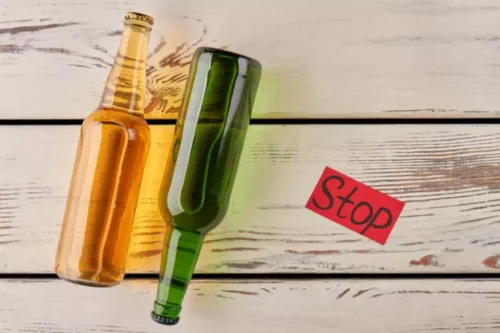Cocaine Addiction Treatment & Rehab Treatment Options & Programs

While medication-assisted treatment and behavioral therapies are important components of cocaine addiction treatment, lifestyle changes can also play a crucial role in promoting long-term recovery. This article will explore the importance of lifestyle changes in cocaine addiction recovery and some strategies for implementing these changes. One treatment option that has been proven effective is medication-assisted treatment (MAT). MAT combines medication with behavioral therapy and counseling to help individuals manage their addiction and prevent relapse.
Cocaine Eyes Signs & Symptoms
This can be done medically or naturally, with medical detox providing more intensive monitoring and supervision for those struggling with addiction. Symptoms of cocaine cocaine addiction treatment overdose include high blood pressure, sweating, nausea, confusion, severe anxiety, tremors, seizures or stroke. Because many of these can be life-threatening, it’s vital that you don’t perform cocaine overdose treatment at home. Motivational interviewing is another powerful tool in the addiction treatment arsenal. It’s a collaborative approach that helps individuals find their own motivation for change.

Cocaine Addiction Treatment and Rehab Programs
Cocaine addiction is a significant issue that can cause devastating relationship and health problems. Our state-specific resource guides offer a comprehensive overview of drug and alcohol addiction treatment options available in your area. The Recovery Village offers comprehensive dual diagnosis treatment to ensure that each client is able to address the complex factors that influence their substance use disorders. By healing old wounds and investigating the roots of both conditions, clients emerge from treatment with higher self-esteem, increased self-knowledge and the skills needed to make recovery a lifelong endeavor.
- Additionally, aftercare can involve transitioning back into society and reestablishing relationships and work activities.
- Cocaine addiction can negatively affect a person’s physical and mental health, including heart problems, anxiety, depression, and paranoia.
- Most rehabs last 30 to 90 days, but may last longer depending on the individual’s needs.
- By seeking treatment, you gain access to a team of experienced professionals who are knowledgeable about addiction and can guide you through the recovery process.
- In the early days of treatment, a person may still be affected by drug use and not able to make the positive decisions that can put them on the road to recovery.
- Cocaine addiction rehab programs typically begin withmedically supervised detox, followed by several different levels of recovery care.
Supportive Services for Families and Loved Ones

Regular exercise can also improve overall physical health and reduce stress, which are important factors in maintaining sobriety. Cocaine addiction can profoundly impact a person’s physical, mental, and emotional well-being. Lifestyle changes can help individuals address these issues and promote overall health and wellness. One important lifestyle change in cocaine addiction recovery is reducing stress. In addition to medication, therapy, and counseling, support groups can also be an important part of cocaine addiction treatment. Support groups such as Narcotics Anonymous (NA) provide a community of individuals who are going through similar struggles and can offer support and guidance.

- While medication-assisted treatment and behavioral therapies are important components of cocaine addiction treatment, lifestyle changes can also play a crucial role in promoting long-term recovery.
- For others, it could involve intensive outpatient treatment combined with medication and individual therapy.
- Rehab consists of a combination of therapy, counseling, group meetings and other programs that work to address the underlying causes of addiction and create a plan for recovery.
- There are numerous resources for finding appropriate treatment options, from national helplines to local addiction services.
Cocaine can also cause other adverse effects, such as anxiety, crawling sensations on the skin, hallucinations, and paranoia. Some of these feelings can persist, or might even increase, during the comedown (“crash”) as the euphoria wears off. When a person is addicted to cocaine, they may begin to use it with methods that produce a more intense effect—such as smoking or injecting the drug instead of snorting it.

One example is detoxification alone, which only addresses the physical symptoms drug addiction of addiction but does not address the underlying psychological and behavioral issues. Another example is using punishment or shaming as a form of treatment, which can be counterproductive and harmful to an individual’s recovery journey. From medically supervised detoxification to structured therapy and holistic care, there are several treatment options that can help individuals achieve lasting recovery from cocaine abuse and addiction.
- It is important that this center is also able to treat other drugs being used and co-occurring mental conditions.
- This approach taps into the brain’s reward system, redirecting it towards healthy behaviors.
- Keep in mind that you can step up or step down to different levels of care as your needs change.
- Meditation and mindfulness practices can also be effective for cocaine addiction treatment.
- At CCCADA, we understand that addiction isn’t just a physical issue but also affects one’s mental health.
- Acupuncture is a form of traditional Chinese medicine that involves inserting thin needles into specific points on the body to alleviate pain and promote healing.
- Penn Nursing students are bold and unafraid, ready to embrace any challenge that comes their way.
- Many treatment facilities make aftercare a part of each patient’s recovery plan, so that healthy supportive systems are put in place before the patient’s treatment has ended.
Outpatient rehab may be preferable for clients with less severe addictions, or those who cannot leave their jobs or families to take part in full-time residential treatment. It is also undergone as a step down from more intensive levels of inpatient care. During outpatient rehab, participants live off-site in a sober living or supportive home environment. Each client creates a part-time schedule for treatment that fits around work and home responsibilities. For clients participating as part of a full continuum of care, outpatient rehab provides a supportive opportunity to make the transition out of cocaine treatment easier. Recognizing that recovery is often nonlinear, a more nuanced view of treatment is needed, one that acknowledges that there are multiple paths to recovery.

